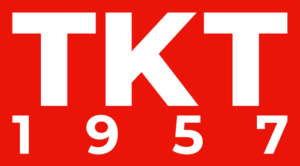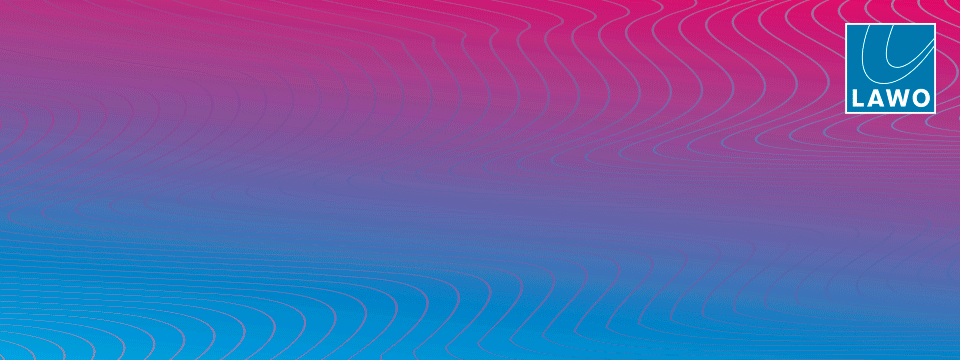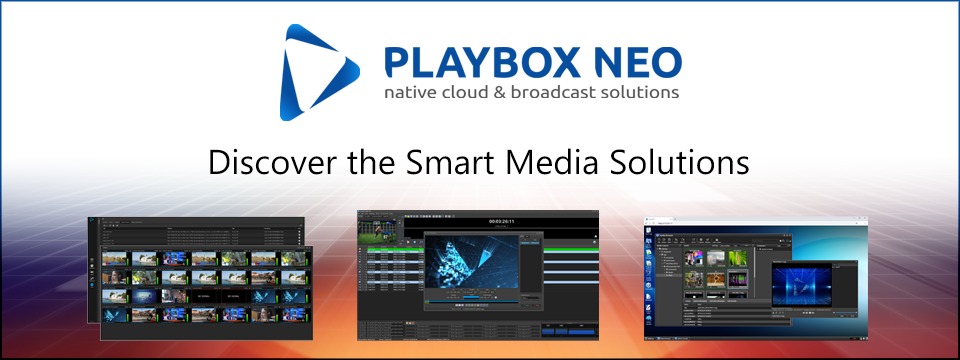Interview with Daniella Weigner, Managing Director and co-founder at Cinegy GmbH.
– Who chose Cinegy as the company name?
The name Cinegy denotes the symbiosis and collaboration in production and cinema because we had this idea of becoming more film-oriented back then, the name stuck. I credit that to my husband who came up with the vision and the name.
At that time, when we were working with AIST and Cinegy, we were also working with BBC in the United Kingdom as a digital asset management system which is quite an interesting part of the story. In 1998, AIST was working with the BBC on designing a system for ingesting material into their database because BBC has a lot of archival material that was not well sorted and organized.
AIST was brought in to solve this problem in conjunction with some other companies So, we ended up doing a lot of the work for not only the graphic user interface but also the database part – the secret treasure – everything that was in the archive. How to search, manage, as well as monetize assets was a new idea then, and as software, well it was a pretty new approach that is standard today.
It was at this time that we decided to rebrand what we did for broadcast from AIST to Cinegy, thereby making our move clearer, and BBC was one of our earliest customers and still is one of our customers. That’s a relationship spanning over 20 years.
– In the 14 former USSR countries, there are just only 6 female CEOs in the TV industry. How do you feel about this?
This business is quite varied, and I try not to think about it as a female-male enterprise. I think people should get to the top on their merit. I am not a fan of quotas for women in this business, but I see that they can be helpful to promote qualified and overqualified women and to give them a forum and a space. I am very much in favor of promoting people to positions that they are the most qualified for. The thing is, I’ve never really thought of myself as a female CEO; I’m a CEO and I happen to be female. I recognize that I have a fortunate position really.
–Now that Cinegy is a global company, what do you think are your main achievements?
We are proud to have created the company in an organic fashion. We started with a good development team, developed an effective sales strategy, and built up a fantastic base of customers, partners, and sales partners.
As a family company, owned by a husband-and-wife team, over the years we have enjoyed working with colleagues who have had families and children of their own and it has been great watching them grow in their personal lives with us too. We feel ourselves to be a much more intimate and close-knit company than some of the bigger brands in our industry.
I would say that one of our main achievements is to have kept that sense of community as the company has grown. I think that has helped us to develop our software better. Not only are we personally quite well known to each other but also, people working on the products work more effectively with the code as well as the people that they have known for so long. There has been a low turnover of development staff and technical people.
– Do you think that what you envisioned for your company when you first acquired it is now a reality or is it still in the making process?
From a personal point of view, owning your company can be an interesting goal to have since it involves working for yourself and being independent but of course, that means you are responsible for not only yourself but also, everybody who works for you and that is a challenge. So, the dream of company ownership or owning your business is a great and interesting experience but there are so many things that you don’t know until you do it. It requires flexibility and a reasonable level of expectation whilst being prepared to fail and to take risks at the same time. I really feel responsible towards my co-workers.
When we started, what we wanted was to give tools to people to help them find, manage, and work easily with their valuable content in the best and least expensive way. Twenty years ago, there weren’t that many tools that could do what we had developed and were developing. A lot of stuff was tape-based; IP was still a very faraway dream and clouds were only in the sky, so the vision that we had was that we anticipated a lot of these trends and how you could leverage software, technology, science, and algorithms to achieve that. We laid the foundation of everything that we and a lot of our competitors are doing today. I inherited a lot of these and I see myself as a custodian.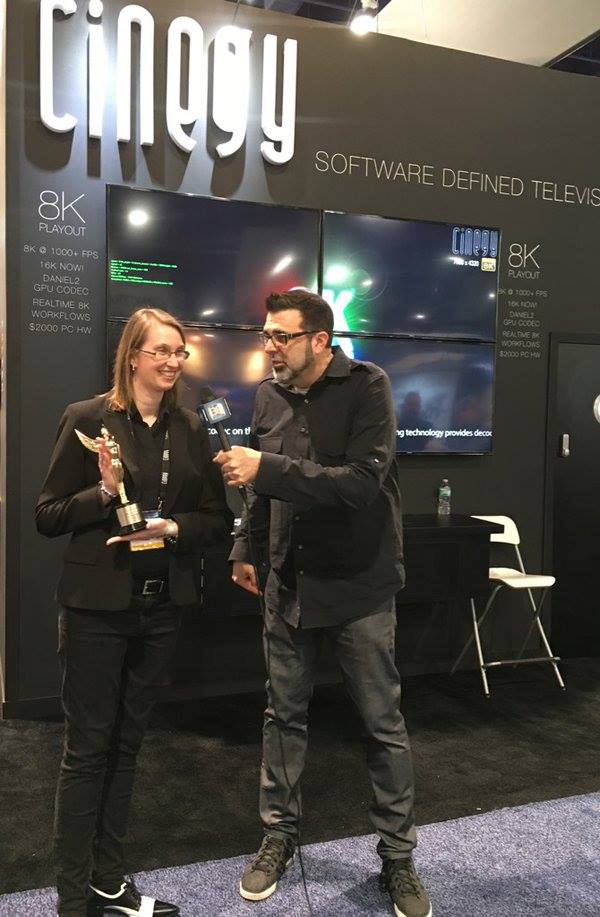
– What would be your response to a company that wants to acquire your company?
I would say ‘how much?’
In all seriousness, we enjoy working as we do and growing the business as we envision. Of course, I know that as a business strategy, companies need to acquire other companies and technologies to grow faster. However, it has not been our plan to be a part of that.
But never say never. If someone had an awesome offer, I am open to ideas…
– Can you tell more about your mission of providing software-defined television, IP-centric and technologically advanced diagnostic solutions?
One of the ideas at our inception was to make our products work as best as they could; we were never a hardware company but always worked with software, video, and editing tools. So, it made absolute sense to take those building blocks and apply transactional knowledge of software coding and decoding to the products as we know them.
We started with the archive and editing tools and what you see today is just an evolution of everything from the archive to editing to playout right through to broadcast automation as well as all the other tools that we have. In a certain sense, we have many parts to our company, and we just happen to show the world the products that we have got but the approach is to understand how those products have been developed and the tools inside them. The most interesting part if you are a technologist is that, if you look at the algorithms, optimizations, and how we have developed them, they are more interesting than the products themselves.
– Which opportunity does SRT protocol open for your existing and potential customers? How does your company thrive in third-party integrations with other vendors and companies?
SRT was a natural inclusion into our products. Our customers want to have secure streams, with the best quality, and they need the lowest latency, so we have supported SRT and other products of that type for a couple of years now. And we have developed the products by including more enhancements around the SRT stack.
SRT for us means giving our customers more optimization through the enhancements that have been delivered through using fewer CPU resources has enabled our customers to enhance their workflows better. We use the tools available to us to make our products faster by using less computing power.
Recently, we have implemented the newest version of Cinegy Air 21 that enables better encryption because encryption is a very big topic for us. If you are delivering and receiving feeds via the internet, decryption, and protection are critical, so we have enhanced our encryption from contribution to distribution. This is particularly important to our customers and there are many ways it can be used.
Our customers don’t pay for SRT because it is in the products we are shipping. We have always been focused on adding value by enhancing our products, developing them to be better, faster, more secure, robust, and less expensive, and this is something we remain committed to.
Therefore, as we make enhancements to our SRT or any other technologies that automatically upgrades the products, you don’t pay extra for it. The better the SRT, the better the products, and, essentially, the better the customer.
We have always had a strong third-party integration possibility, having worked with Adobe, Avid, and even some of our competitors to integrate our solutions with them or augment what we do for their customers.
MOS integration for safer news production means it’s not just a closed Cinegy system. Cinegy was always built to be open and a lot of the solution tool kits we provide for some of the system integrators and major clients we work with can be taken and adapted to their workflows using the hooks and APIs that we can provide.
Some of the things that they do are not always shipped as our products, but we have customers that have customized the frontend or added some run-down or drop-downs as something they need in their business. Unlike some of our competitors, who might deliver products that perform a specific function and additional tools which the customers might have to pay for, we work with our partners and customers to help them achieve their workflows to suit their businesses.
We deliver additional tools that can help customers that want something different and out-of-the-box. And we have been doing that since the beginning. One of the first customers we had was in Turkey 16 years ago; we took them from six channels to over seventy in 15 years from a greenfield site where they were just looking to replace their excel spreadsheets and sticky notes.. now they and many other customers, have an entire Cinegy system that has replaced all the third-party stuff that they had previously. And we were able to help them achieve this in a relatively inexpensive way.
Not all customers are the same, there’s no cookie-cutter approach to software. We deliver a set of tools that performs its functions though we do have some customers that take those functions much further.
– Can you highlight the main benefits of your solutions to such a competitive sector as news production?
Interestingly, news production gets highlighted separately from all the other things that we do because one of the workflows we have in Cinegy Capture, Cinegy Archive, and Cinegy Desktop right through to Cinegy Air already operates as a new system. For us, it is just another application. We also have third-party integration to MOS for people who need to work with those solutions, and we do that quite well. We do everything that news production would need in our systems, and we’ve been doing that for many years; in fact, many of our best and most interesting news customers are in Russia and other countries of the RSS.
That leads back to the history of the company because we have always had a strong connection to Russia and Eastern Europe and a lot of our developers come from the Moscow region. Next to English, the native language of our company is Russian. We are in many countries and some of the first news systems we developed were for Channel 1.
– How have your solutions increased the effectiveness, agility, and flexibility of Editors, Engineers, and Media Managers?
If you invest in a Cinegy system to be used for editing or production, then you have a software system that grows as your business, requirements, or operation grows. Software doesn’t rust or get old if you keep using it. The power of software is limitless; it is only limited by the imagination. So, we are consistently developing our tools with optimization, improvements, and software technology.
For us to be able to use hardware, we have to develop our software to improve its capabilities.
– So why Cinegy and why software?
You can deploy Cinegy from one seat to thousands of seats. It is a transactional database approach that involves using the same principles applied as if using from one editor to hundreds. And we have always been very robust with the user and rights management, all of that IT knowledge and principles that were used to design Cinegy years ago. Of course, that’s more prevalent today than it was years ago and people expect it now.
We take advantage of any new advancements that we can and hope to also invent our own. As long as you can keep your software up to date, it’s cheaper, intuitive, and easy to train on almost any Cinegy system.
The proprietary systems that are hardware heavy tend to be more expensive and in the last few years, capital investments have been a problem for our customers, and we are looking for alternatives.
Software as a solution has always been our solution.
Software-defined television is what we have been talking about for many years.
– Can your products be customized to provide the functionality that your customers require?
Of course. We do customization and development for customers all the time. The front end of Cinegy came about because of the work we did with BBC and because they wanted to be able to use us with their Blue Planet series and that required specific functionalities to be integrated.
We ensure that any tailored development work we undertake is carefully thought-out and fits both the needs of the customer and the product. All the changes that are made to the Cinegy, appears in future versions for posterity, benefitting everyone who upgrades.
– What is in your product’s roadmap for the future?
We are heading towards Cloud services and virtualization and have been for the past 10-15 years. We can already move software from your machine to somewhere else – data centres or hosting – and how to productize and commercialize that in a way that makes sense to the customers.
We work with many partners like AWS and Microsoft Azure but also clients who want to do private Cloud initiatives. We are also looking into how to take advantage of the high-performance codecs that we are developing and how it can improve and enhance optimization in our products.
Over the last seven years, we have developed the DANIEL Codec and now we have the DANIEL 2 which is a production codec for professional recording. It goes into all our product’s editing, playout, and archival tools. The USP is that is very fast and involves being able to take advantage of the power of GPU in high performance. It focuses on how we can make the software work optimally even with equipment that is not the best because today, one of the major problems our customers are facing is getting equipment and upgrading hardware infrastructure.
Though a lot of production is being done remotely now, and a lot of software is going into the Cloud, we do have some customers who still wish and need to have their onsite infrastructure but may not be able to afford new ones. So, we need to ensure that our software works in the best way it can.
– Do you have any plans with regards to markets in Russia, the CIS, and Eastern Europe in the nearest future?
As I mentioned earlier, we have always been presented in the Russian, CIS, and Eastern European markets and it is the genesis of our products, developers, and our first customers. The plan is to build on those and make the existing and new customers aware of what we have and what we can offer to them.
One of the problems we have is that having been around for so long, some people have a perception of what we do and might not realize that we have our Playout systems, Codecs, or News production systems. They might just remember us as some editing tool from 2005 that they used once, but we have come a long way since then, and we plan to grow our markets there.
We have 24/7 support that speaks Russian and is available to the Russian-speaking markets, and are talking to all the large broadcasters and news production companies.
One of the things I enjoy most about my job is the long-standing partnerships we have with companies like DNK, Proland, and Matrix who have worked with us for 15 years.
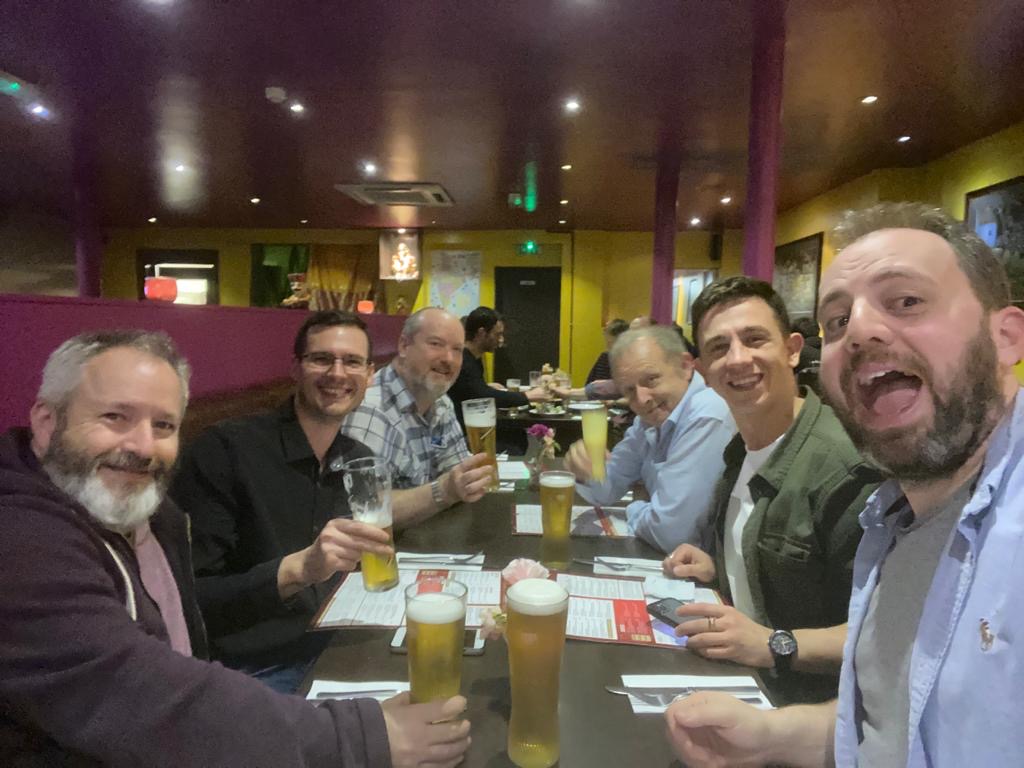
– How has the COVID’19 leading to the cancellation of major trade shows and exhibitions influenced the business of the company? How have you been communicating with your customers since then?
We have been developing Cinegy tools to work virtually and in the Cloud for many years so, from a business point of view, working out how to deploy our solutions to our customers was not a big problem. In fact, we found our business increasing over the pandemic but with a focus on different products.
We realized that rather than an onsite, large, monolithic type of installation that might take quite a few years to deploy, people needed quicker solutions they could subscribe to. A lot of people took advantage of our Opex modules as opposed to having to buy the system completely. Some went for AWS, and we found that people deployed our multiviewer and monitoring solutions. Anything that is very IP-centric and virtualizable was the customer’s choice.
From a company point of view, we were able to segue quite easily into working from home when needed. We were quite lucky that our offices in all of our locations are large, and we could socially distance when we were allowed to be on site. We were safe there and had specific policies in place that kept people safe with masks, social distancing, and so on.
The transition was easier for us because we are used to liaising between our remote offices with teams based in the UK, Netherlands, Ukraine, Russia, USA, and Germany.
We have been able to continue communicating with our customers by increasing our webinars and have made our certification training available online. Training and schooling people on complicated systems is a challenge at the best of times but we were able to put our tools to work in order to deliver all that was needed virtually, which made the experience better and convenient for our partners because it cut down the cost of traveling. It also changed how we taught people by being able to give them tools in the Cloud to test their knowledge.
One of the highlights of lockdown for us was the technical conference that we hosted between Germany and the United Kingdom using our own casting and video tools.
It can be said that trade shows will come back at some point and that would be true because there is the desire for people to see each other again. For example, we are exhibiting at IBC in Amsterdam next month. I think, though, that there will be a smaller representation of the international companies and we will see a lot more regional shows gain in greater importance.
Having had the opportunity to see that we can get our messages to more people more effectively by using online tools that allows us to be more present. The money spent on massive trade shows can potentially be used for other better things. I don’t think our partners and customers want to be traveling as much. Many would prefer to be doing their exhibitions in a concentrated, focused fashion without going to Singapore, Las Vegas, and Amsterdam.
-What impact has AI had on your team and in the research and development of your company?
Cinegy has always been a research and software development company, and we have been working on artificial intelligence for years. The DANIEL2 Codec deals with high-performance computing that is GPU-based, our number-crunching and science, AI and virtualization, and many other areas rely on the GPU.
Until we developed DANIEL2, there was no GPU-based Codec that exploited the power of the GPU like we did and are still doing, and thanks to the many smart developers who have come from science, aeronautical and military backgrounds. They have applied all that mathematical and algorithmic knowledge to our products, and we do forget that a lot of people think this is news but to us, it isn’t, we’ve been doing this for years.
